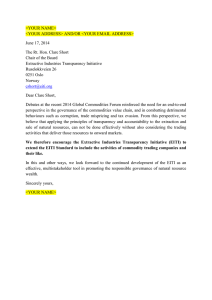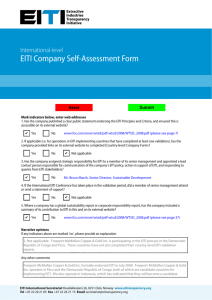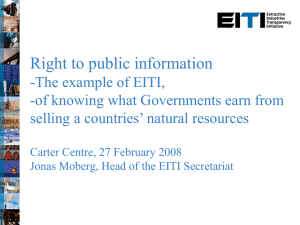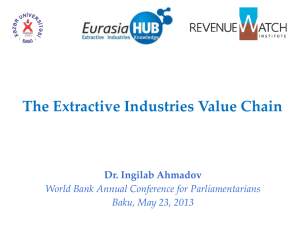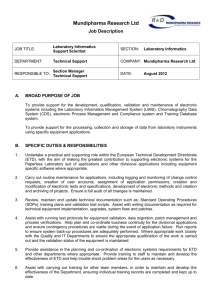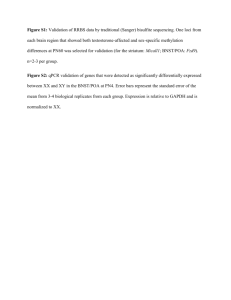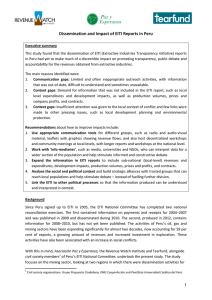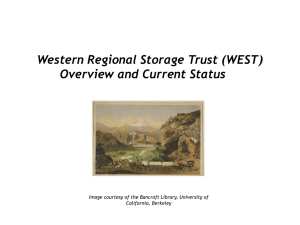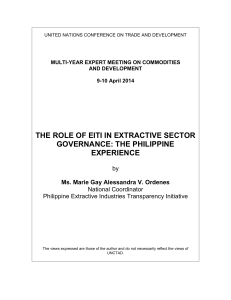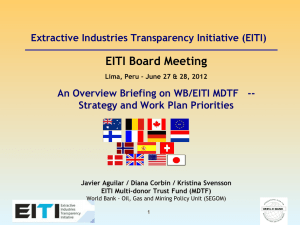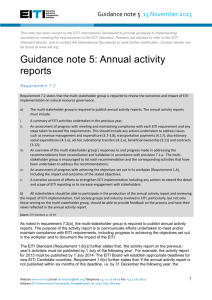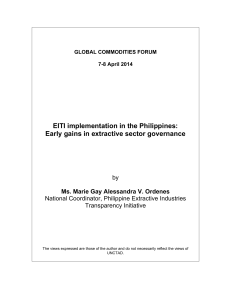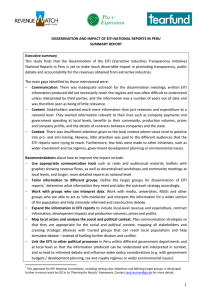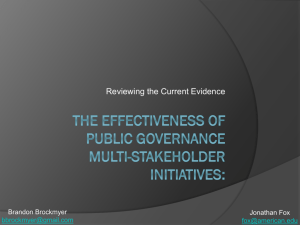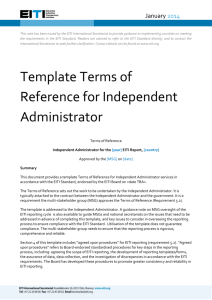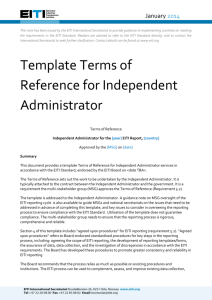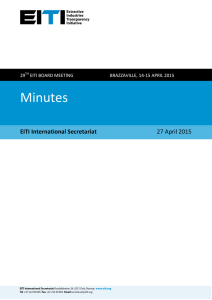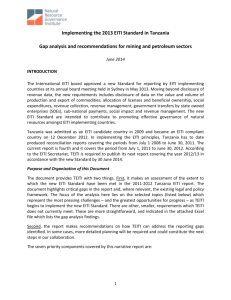English
advertisement
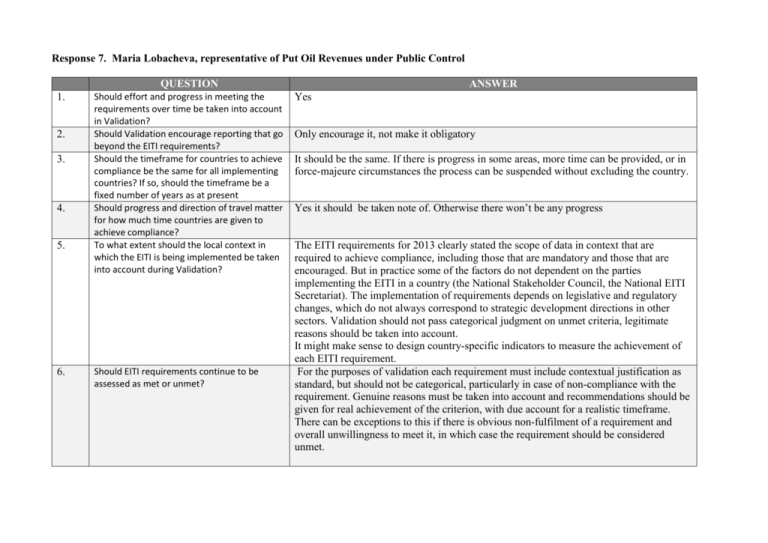
Response 7. Maria Lobacheva, representative of Put Oil Revenues under Public Control QUESTION 1. 2. 3. 4. 5. 6. Should effort and progress in meeting the requirements over time be taken into account in Validation? Should Validation encourage reporting that go beyond the EITI requirements? Should the timeframe for countries to achieve compliance be the same for all implementing countries? If so, should the timeframe be a fixed number of years as at present Should progress and direction of travel matter for how much time countries are given to achieve compliance? To what extent should the local context in which the EITI is being implemented be taken into account during Validation? Should EITI requirements continue to be assessed as met or unmet? ANSWER Yes Only encourage it, not make it obligatory It should be the same. If there is progress in some areas, more time can be provided, or in force-majeure circumstances the process can be suspended without excluding the country. Yes it should be taken note of. Otherwise there won’t be any progress The EITI requirements for 2013 clearly stated the scope of data in context that are required to achieve compliance, including those that are mandatory and those that are encouraged. But in practice some of the factors do not dependent on the parties implementing the EITI in a country (the National Stakeholder Council, the National EITI Secretariat). The implementation of requirements depends on legislative and regulatory changes, which do not always correspond to strategic development directions in other sectors. Validation should not pass categorical judgment on unmet criteria, legitimate reasons should be taken into account. It might make sense to design country-specific indicators to measure the achievement of each EITI requirement. For the purposes of validation each requirement must include contextual justification as standard, but should not be categorical, particularly in case of non-compliance with the requirement. Genuine reasons must be taken into account and recommendations should be given for real achievement of the criterion, with due account for a realistic timeframe. There can be exceptions to this if there is obvious non-fulfilment of a requirement and overall unwillingness to meet it, in which case the requirement should be considered unmet. 7. Since the requirements are fairly general, specific indicators need to be designed that take account of the local context, so that the validator is not guided by its own subjective notions and assessments. Should there be more disaggregated Yes, this will make it easier for a country to assess how much progress it is making assessments, showing which requirements are towards compliance. met and which requirements are unmet, including the level of progress in meeting each requirement? 8. Should the consequences of not reaching compliance status be removed? I.e. countries are allowed to stay members of the EITI as long as they make progress towards meeting requirements? If the country does nothing to achieve the requirements, it must be removed. A country must make progress that is clear and ongoing. Time limits are important because if there are no limitations as to time, some countries will drag their feet and only make a few adjustments. 9. How can Validation measure progress or direction of travel towards meeting a requirement? 10. Should Validation take place more frequently to measure progress, for example at the end of each EITI reporting cycle, or is the current frequency of every 3 years adequate? Should the concept of “candidate” and “compliant” be replaced, and if so with what? What terminology could be suitable to indicate the various degrees of progress in meeting EITI Requirements? Are the current As I wrote above, indicators to assess progress need to be designed. Perhaps these indicators should be designed for each country individually, since their start levels of transparency and legislation are different. Measurements can be made using these indicators (working group set up + draft law prepared, which takes account of such and such + draft law included in the parliament schedule + approved by parliament deputies +). Performance of these indicators can demonstrate progress and political will, but there still have to be time limits. Movement is good, but if it does not lead to a final result by a certain time, it is bad. So time should be given to achieve requirements, and if there is progress but a requirement is not achieved, then more time can be given, which should also be limited. Every 3 years is adequate. 11. 12. No They are appropriate 13. 14. 15. concepts of “limited progress” and “meaningful progress” appropriate? How can Validation incentivize countries to continue to progress and innovate both before and after reaching compliance status? Should multi-stakeholder groups and/or local and international experts on extractive sector governance have a greater role in Validation? Should the International Secretariat have a greater role in carrying out Validation assessments? What are the risks and benefits of this approach? What should be done to mitigate conflicts of interest? Validation and final assessment of a country’s progress is an incentive in itself. Validation must be independent. Hard to say, because I do not know what the role of the International Secretariat is now. On the other hand, the International Secretariat, unlike the validator, oversees the implementation of the EITI process from the time when the country joined the EITI , so it may have a better idea of progress. On the other hand, it may be worth carrying out out dual independent validation (two validators, unrelated and unacquainted with each other) in some cases to avoid lobbying in someone's interests (perhaps one of the parties in the multilateral group in a particular country),
